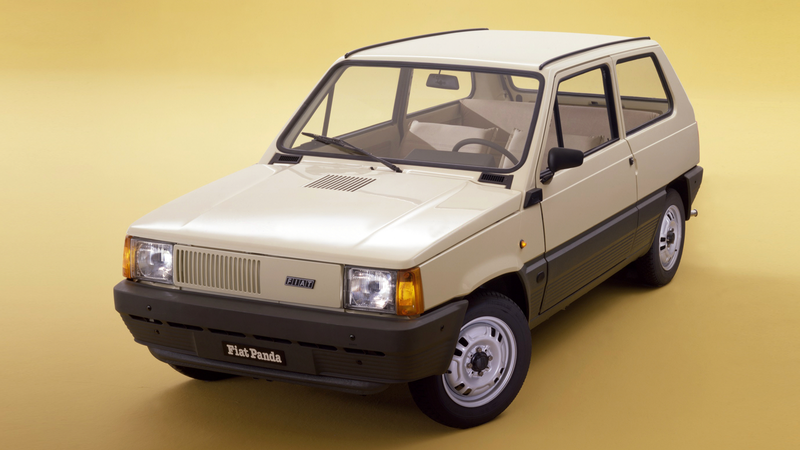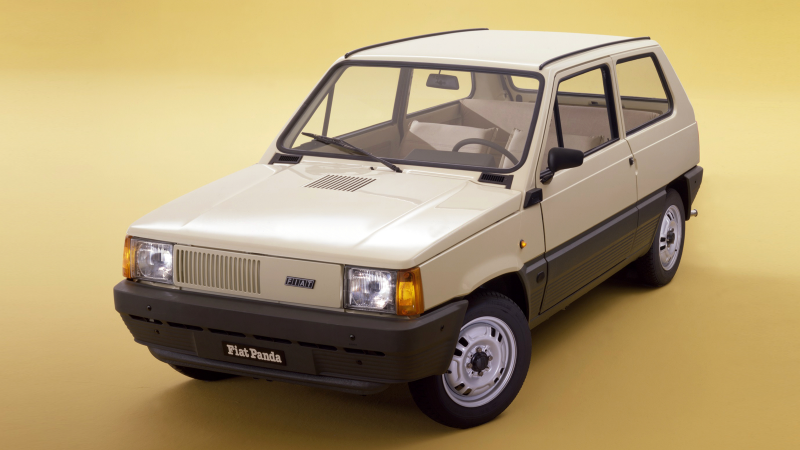
From what I can tell, modern life feels like it’s composed of about 87 percent bullshit. Sure, there’s good stuff floating around, but there’s just a colossal amount of bullshit-wading one has to do to get there. That’s why I think it’s important to pause and contemplate the original 1980 Fiat Panda, one of the least bullshit-encumbered cars ever produced. Think of it like meditation.
The whole premise of the Panda from the get-go was to build an honest, useful car without any pretension. The designer of the Panda, the famous Giorgetto Giugiaro, explained his thinking to the newspaper La Stampa:
The Panda is like a pair of jeans, that simple, practical, no frills piece of clothing. I tried to bring into this car the spirit of military machinery, especially helicopters, that means light, rational, built-for-purpose vehicles.
Old GG really delivered on these ideas with the Panda, which can be thought of as a mass of clever, simple ideas crammed into a useful box. All the glass on the Panda is flat, to keep it easy to make and cheap to replace—even the side door glass is the same, left and right. Just one big windshield wiper. The door handles are a wonderful minimal design that almost isn’t even there, the cooling air intakes at the front don’t extend all the way across because they don’t have to—it’s like the exact opposite of all the fake grilles we see on cars today.
In fact, that grille’s side would switch based on what engine came in the car—you could have early Pandas with a longitudinal, 652cc air-cooled inline twin from the Fiat 126 (the Panda 30, with the grille to the left) or with a 903cc transverse-mounted, water-cooled inline-4 from the Fiat 127 (Panda 45, with the grille to the right). How many other cars can you think of that were flexible enough to have engine options that were both longitudinal and transverse, air-cooled and water-cooled? The only one I can think of is the Volkswagen Gol, and that was more like phasing out one engine for the other, not really offering both.
Advertisement
The interior design of the Panda was incredible as well. First, just look at this stunningly clean and open dashboard design and tell me it’s not satisfying as all hell:
Not only are those materials lovely, all of it is removable and washable: seat covers, door trim, even the dash cover, all of those could come off and be washed. Brilliant!
Advertisement
The tall hatchback design was made to be crammed full of stuff, whatever shape or size that stuff was. The rear seat could fold flat into a platform (or bed), it could be easily removed, it even had an option to be locked into a V-shape so it could cradle fragile or awkwardly-shaped loads.
Damn, that’s good thinking.
Advertisement
The car was meant to be used and to last—rear suspension was simple but rugged leaf springs, like a pickup truck, the plastic cladding on the sides let the car absorb abuse without a care, and crucial fasteners for maintenance and repair were easy to access.
I haven’t even talked about the 4×4 version, which is all the Panda charm and utility, plus, you know, the ability to go anywhere.
Advertisement
In so many ways, the Panda represents something lost with modern cars—there’s an obsession now that dictates that everything has to look powerful and aggressive and premium, and nobody is willing to consider anything else. As a result, we have cars slathered in fragile plastic bits, false grilles, and embarrassing fake chrome exhaust tips, usually in strange trapezoidal shapes.
Sometimes, though, you just want a pair of jeans.













